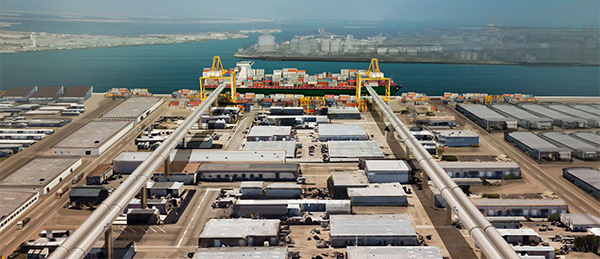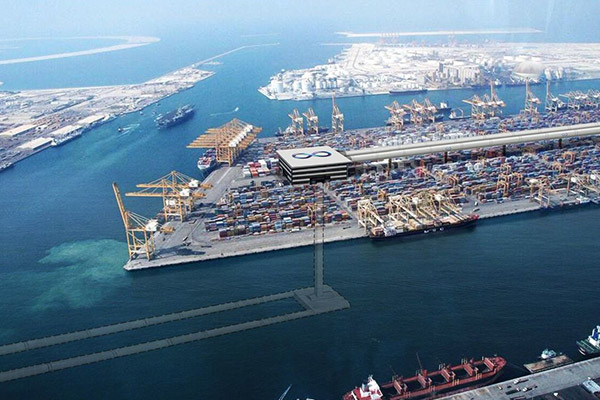Cargo handlers in Dubai and Russia are looking to the technology to reduce costs and handle increasing activity
Possible solution at the Port of Jebel Al. Concept art above and below.
DP World is looking to the possibilities of Hyperloop One in meeting its handling capacity demands at its flagship facility in Dubai’s Port of Jebel Al.
Signing an agreement to conduct a feasibility study into the technology, DP World believes the tube-based, electric propulsion transport technology could lessen the physical restraints it will be facing as the activity at the Port of Jebel Al grows.
The hyperloop proposition would move freight from the dock to an inland facility 29km away in a quick, safe and reliable manner, DP World says, alleviating any use of quay side space, removing the need to involve Dubai’s road network and halting its emissions output.
“This is about testing in real terms how much it costs and how much we can save because if it works in Dubai, we will do it in Africa, India and across Asia,” DP World CEO and group chairman Sultan Ahmed Bin Sulayem says.
“I believe in the Hyperloop. I believe it’s the future.”
One of the busiest ports in the world, currently accommodating 18 million TEUs, the Port of Jebel Al is expected to jump to 19.5 million TEUs in 2017 and continue to grow. It is this pressure that DP World is hoping to address.
“We believe we can increase the volume of freight DP World moves through the port, which supports more revenue and profit for all stakeholders,” Hyperloop One CEO Rob Lloyd says.
The feasibility study will investigate the business case, the route options and cost to build and operate. Both parties believe there are options to run underwater and/or overground tubes.
Another feasibility study has just be completed in Russia and China, where Russian investment firm Caspian Venture Capital determined that Hyperloop One “can generate a sizable operating profit transporting cargo on the Hunchun – Zarubino line.”
To travel from the growing Russian port in Zarubino to Hunchun’s logistics centre, the study says the system would be able to accommodate six containers departing every minute, 20 hours a day, 365 days of the year – roughly 900,000TEUs per year.
To build it would take between US$1.5 billion to $2.3 billion over two construction stages, one starting in 2020 and another in 2023.
When running, the study says it would cost US$77 million per year and generate close to quarter billion dollars a year.
Further feasibility studies will need to be undertaken before it goes ahead.



